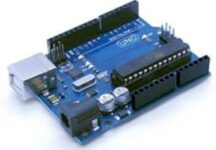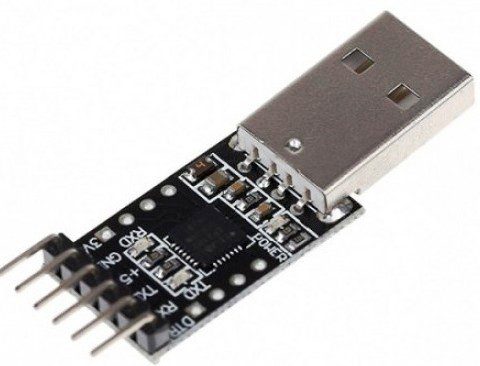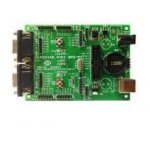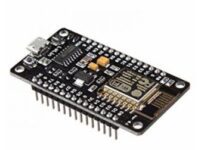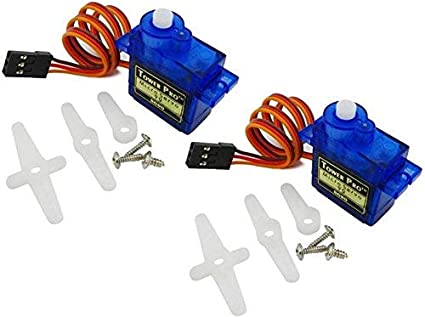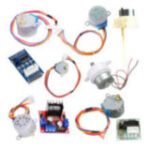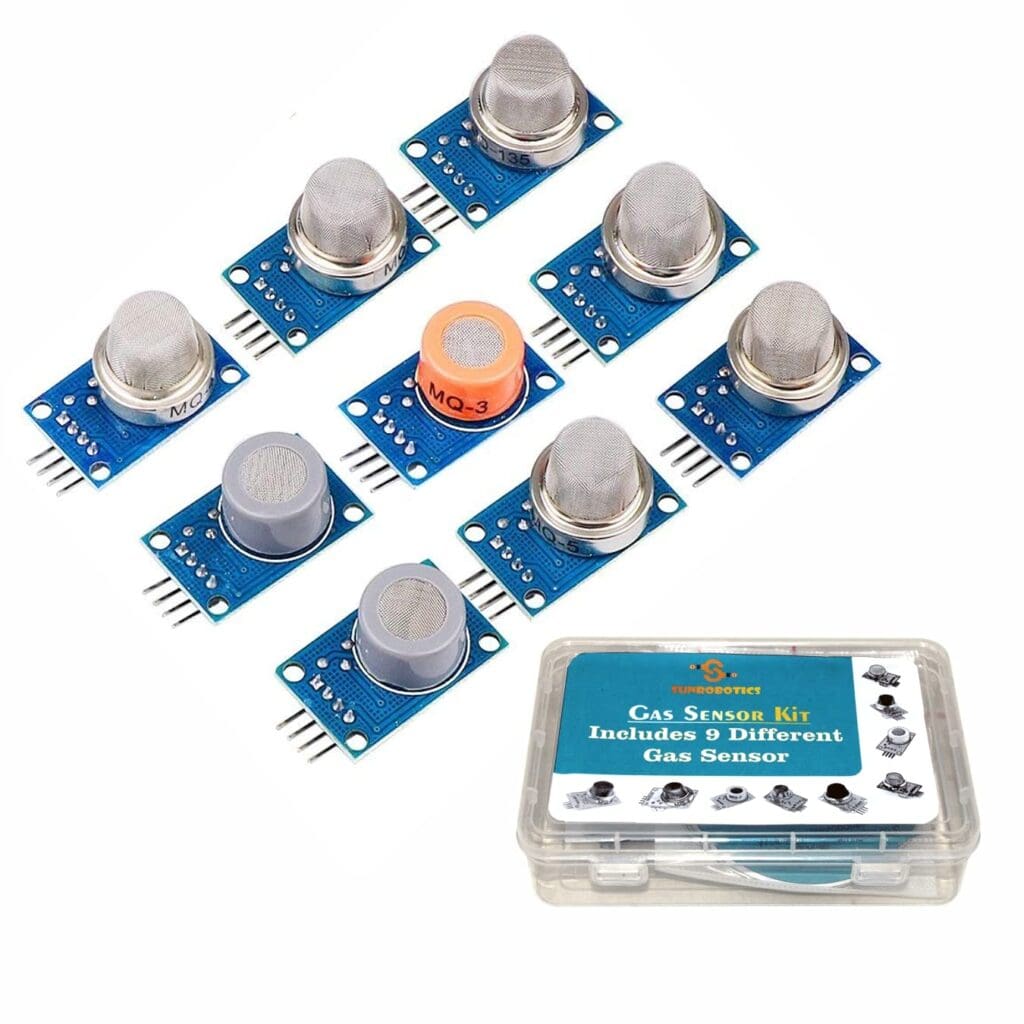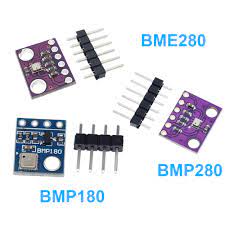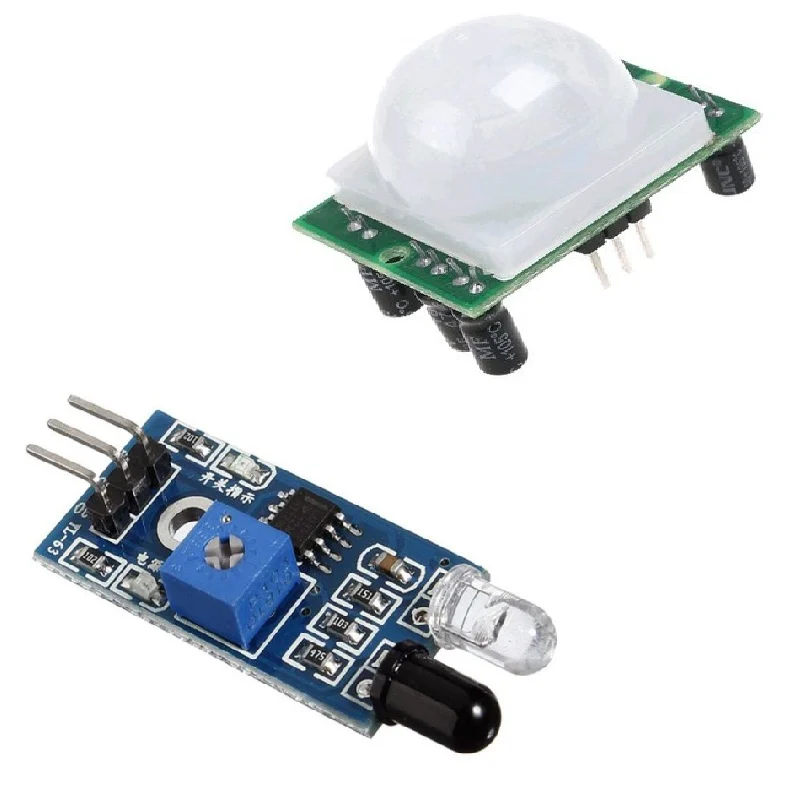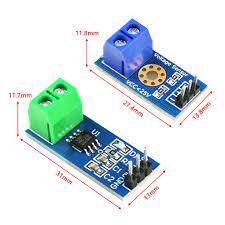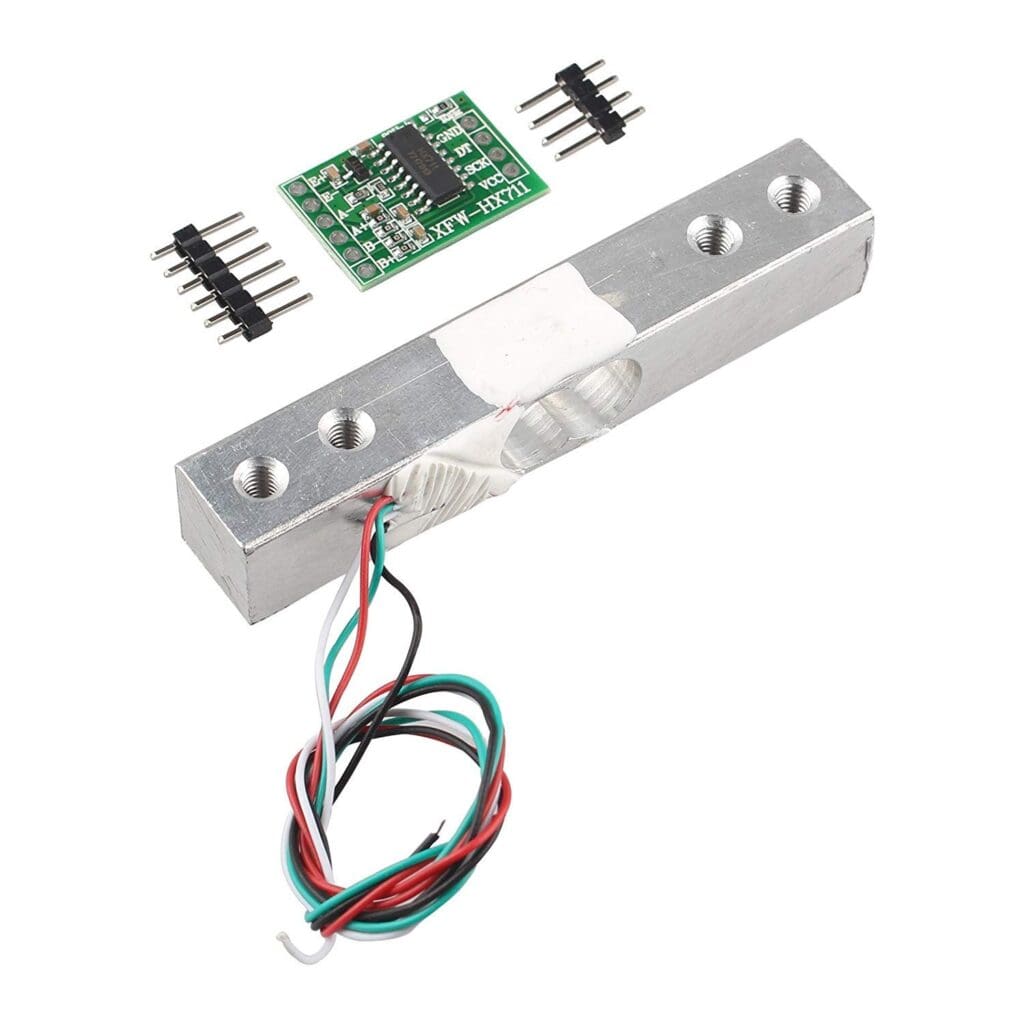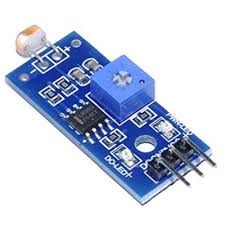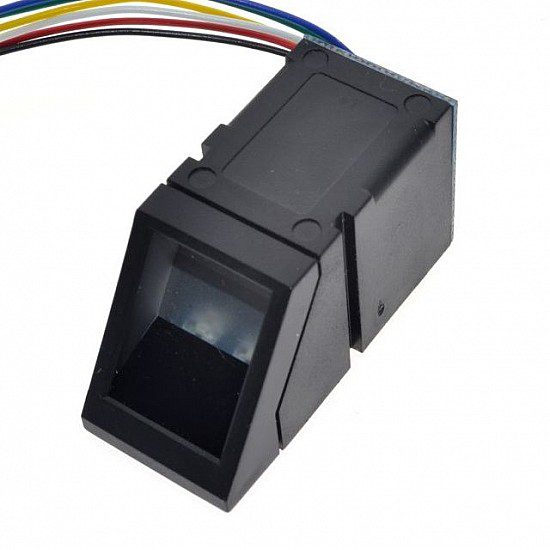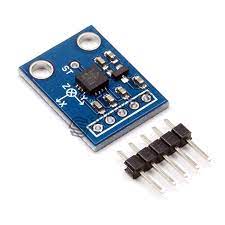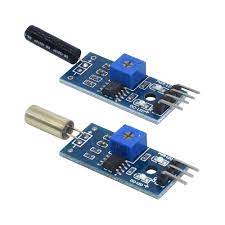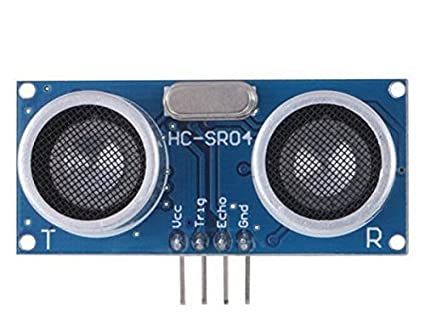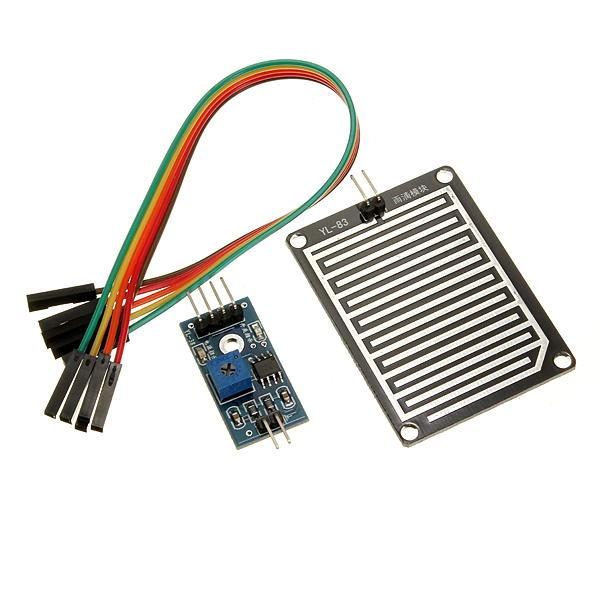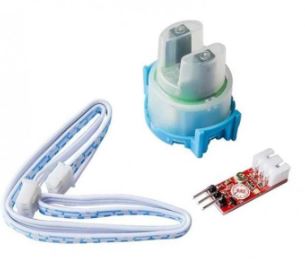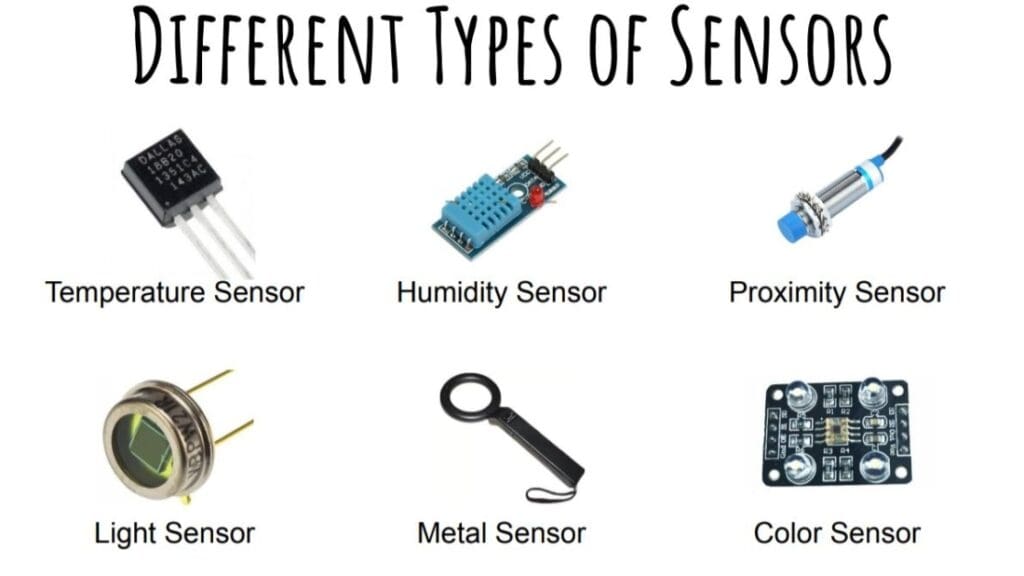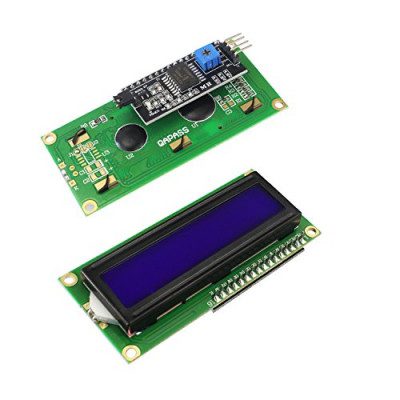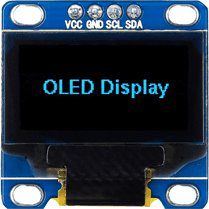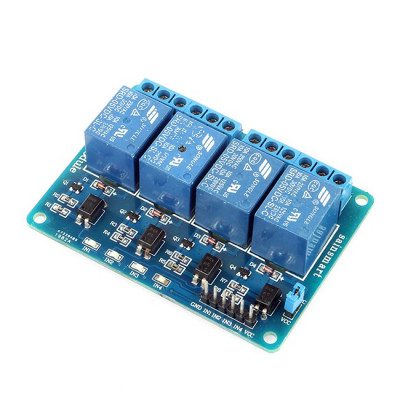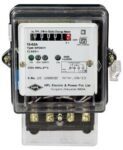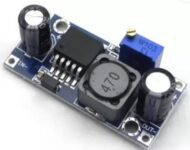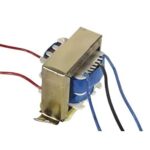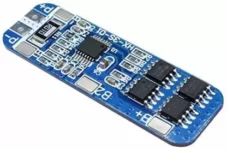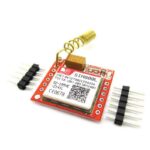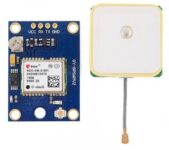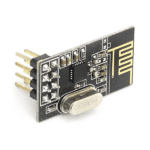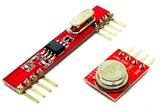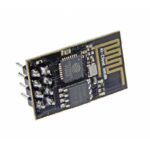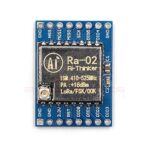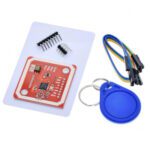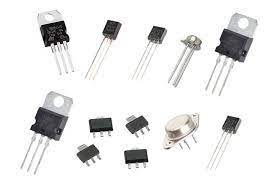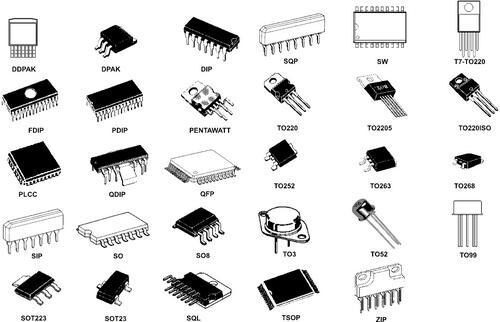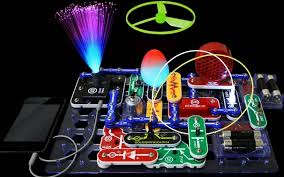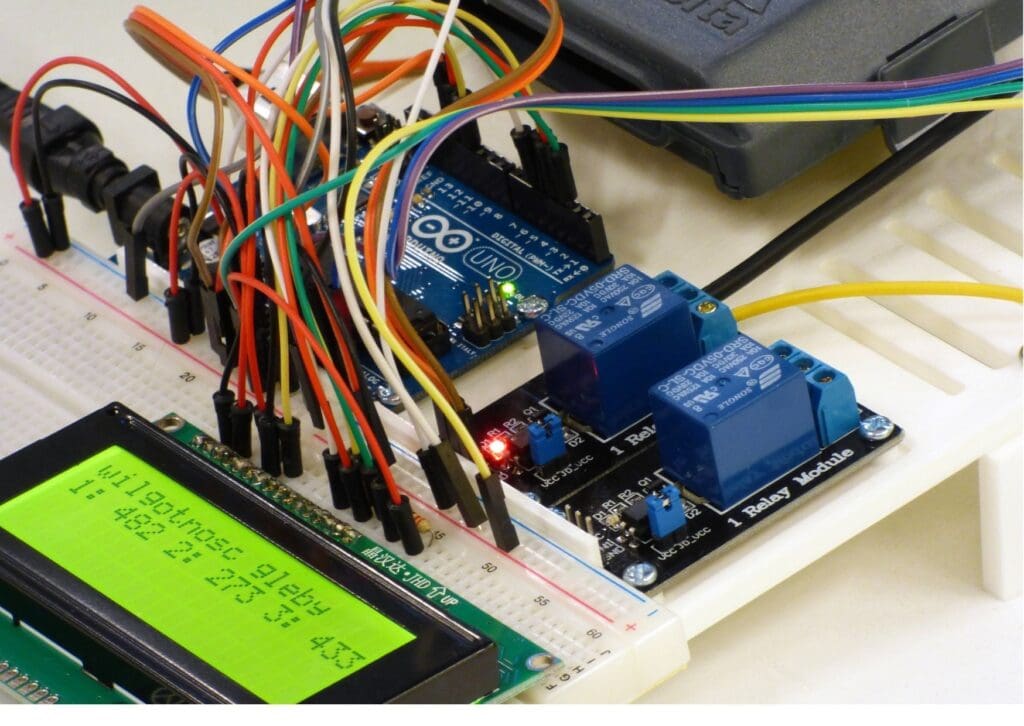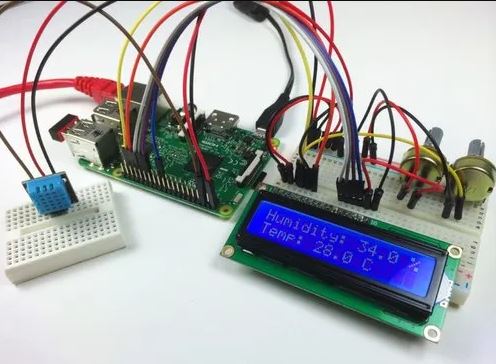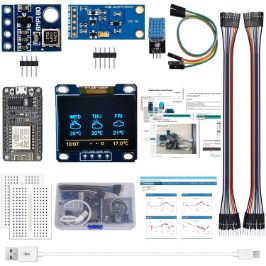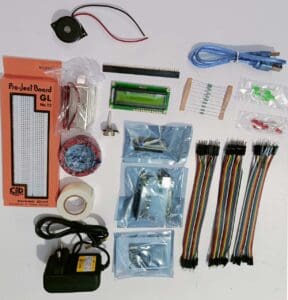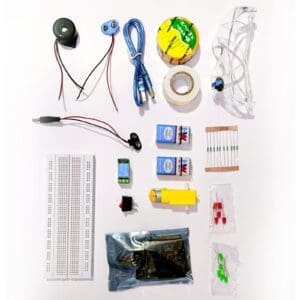Introduction
Machine Learning (ML) has emerged as a transformative technology with profound implications for electronics enthusiasts and practitioners. At the intersection of machine learning and electronics, there lies a realm of innovation and opportunity, where intelligent systems are developed to enhance performance, optimize energy consumption, and enable new functionalities in electronic devices and systems.
Machine learning algorithms, inspired by the way humans learn from data, enable electronic systems to analyze vast amounts of information, identify patterns, and make data-driven decisions without explicit programming. This capability opens up a plethora of possibilities for enhancing traditional electronic devices and systems, as well as creating entirely new applications.
Projects Categories:
Products Categories:
- Robotics
- Actuators
- Camera Modules
- Drone Kits
- Drone Components
- Chassis
- DC Motors
- Other Robotic accessories
- Pick and Place Modules
- Robotic Kit
- Servo Motors
- Stepper Motors
- Wheels
- Microcontrollers & Programmers
- 8051 Microcontroller
- Arduino Microcontroller
- ARM Development Board
- Interface Module
- NODMCU / ESP Modules
- PIC Microcontroller
- Raspberry Pi
- Devices and Actuators
- Display Modules
- Sensors & Module
- Power Supply / Batteries
- Wireless modules
- Electronic Components
- Wholesale Market
Description
1. Smart Sensors and IoT Devices: Machine learning algorithms can be integrated into sensors and IoT devices to enable intelligent data processing and decision-making at the edge. These devices can analyze sensor data in real time, detect anomalies, and adapt their behavior autonomously, leading to more efficient and responsive IoT systems.
2. Analog and Mixed-Signal Circuit Design : Machine learning techniques are increasingly being employed in analog and mixed-signal circuit design to automate the optimization process and explore design spaces more effectively. ML algorithms can assist in tasks such as circuit sizing, layout optimization, and parameter tuning, leading to faster design iterations and improved circuit performance.
3. Signal Processing and Communications: Machine learning algorithms play a crucial role in signal processing applications within the field of electronics. They enable advanced modulation and demodulation techniques, adaptive filtering, channel equalization, and error correction coding, improving the efficiency and reliability of communication systems.
4. Power Electronics and Energy Management: Machine learning is revolutionizing power electronics and energy management systems by enabling predictive maintenance, load forecasting, and optimal energy utilization. ML algorithms can analyze energy consumption patterns, predict future demand, and optimize power delivery in real time, leading to significant energy savings and improved system reliability.
5. Fault Diagnosis and Prognostics: Machine learning techniques are used for fault diagnosis and prognostics in electronic systems, allowing for early detection of faults and prediction of system failures. ML algorithms can analyze sensor data, identify patterns indicative of impending failures, and trigger proactive maintenance actions to prevent costly downtimes.
In summary, machine learning offers unprecedented opportunities for electronics enthusiasts to explore new frontiers, innovate, and create intelligent electronic systems that are capable of learning, adapting, and optimizing their behavior autonomously. By harnessing the power of ML, enthusiasts can unlock the full potential of electronics and drive forward the next wave of technological advancement.

What is The Role Of Machine Learning in Electronics
Machine Learning (ML) plays a significant role in electronics by enabling the development of intelligent systems that can analyze data, make decisions, and adapt their behavior without explicit programming. Here are some key roles of ML in electronics:
1. Pattern Recognition and Classification: ML algorithms can analyze electronic signals, such as sensor data or communication signals, to recognize patterns and classify them into different categories. For example, in wireless communication systems, ML algorithms can classify different modulation schemes or identify interference patterns in received signals.
2. Anomaly Detection and Fault Diagnosis: ML techniques are used for anomaly detection and fault diagnosis in electronic systems. By analyzing sensor data or monitoring system parameters, ML algorithms can identify abnormal behavior or detect faults in electronic components or circuits. This capability is essential for predictive maintenance and fault-tolerant system design.
3. Predictive Maintenance: ML algorithms enable predictive maintenance in electronic systems by analyzing historical data to predict when equipment is likely to fail or require maintenance. By detecting patterns indicative of impending failures, ML models can trigger maintenance actions proactively, reducing downtime and preventing costly equipment failures.
4. Optimization and Control: ML techniques are employed for optimization and control tasks in electronic systems, such as power management, resource allocation, and control of dynamic systems. ML algorithms can learn optimal control policies from data and adapt their behavior to achieve desired performance objectives while considering constraints and uncertainties.
5. Adaptive Signal Processing: ML algorithms are used for adaptive signal processing tasks in electronic systems, such as adaptive filtering, equalization, and noise cancellation. By continuously learning from incoming data, ML models can adapt their filter coefficients or parameters to optimize signal quality or mitigate interference in real-time applications.
6. Circuit Design and Optimization: ML techniques are increasingly being applied to automate and optimize electronic circuit design processes. ML algorithms can assist in tasks such as circuit sizing, layout optimization, and parameter tuning, leading to faster design iterations and improved circuit performance.
7. Energy Efficiency: ML algorithms are used to optimize energy consumption in electronic devices and systems. By analyzing energy usage patterns and environmental factors, ML models can recommend energy-saving strategies, control power allocation, and optimize system configurations to maximize energy efficiency.
- Overall, the role of ML in electronics is multifaceted, encompassing tasks such as pattern recognition, anomaly detection, predictive maintenance, optimization, adaptive signal processing, circuit design, and energy efficiency. By leveraging ML techniques, electronic systems can become smarter, more efficient, and more reliable, leading to advancements in various industries and domains.

Uses And Appilications
uses and applications of Machine Learning (ML) in electronics based on the roles outlined:
1. Pattern Recognition and Classification:
Wireless communication: ML algorithms classify modulation schemes (e.g., QPSK, QAM) for signal demodulation in wireless communication systems.
Image and Speech Processing ML is used for image and speech recognition in electronic devices such as smartphones, enabling features like face unlock and voice assistants.
2. Anomaly Detection and Fault Diagnosis:
Industrial Equipment Monitoring ML algorithms detect anomalies in sensor data from machinery to predict breakdowns and prevent costly downtime in factories.
Network Security ML models identify abnormal network traffic patterns to detect and mitigate cyber threats in electronic systems.
3. Predictive Maintenance
Power Grid Monitoring ML predicts equipment failures in power distribution systems by analyzing historical data on voltage fluctuations and load patterns, enabling proactive maintenance.
HVAC Systems: ML algorithms forecast equipment failures in heating, ventilation, and air conditioning (HVAC) systems by analyzing sensor data, optimizing maintenance schedules, and reducing energy costs.
4. Optimization and Control:
Autonomous Vehicles: ML algorithms optimize control policies for autonomous vehicles, enabling adaptive navigation, obstacle avoidance, and decision-making based on sensor data.
Robotics: ML models control robotic systems for tasks such as path planning, object manipulation, and grasping, optimizing performance in dynamic environments.
5. Adaptive Signal Processing:
Audio Processing ML algorithms adaptively filter noise from audio signals in electronic devices such as headphones and smartphones, enhancing sound quality.
Wireless Communication: ML techniques dynamically adjust channel equalization and noise cancellation in wireless communication systems to optimize signal quality and throughput.
6. Circuit Design and Optimization:
Analog and Mixed-Signal Circuits ML assists in optimizing analog and mixed-signal circuit design by exploring design spaces, improving performance, and reducing design time.
Integrated Circuit Testing ML algorithms analyze test data to detect defects in integrated circuits, improving yield and reliability in semiconductor manufacturing.
7. Energy Efficiency:
Smart Buildings: ML algorithms optimize energy consumption in smart buildings by adjusting lighting, heating, and cooling systems based on occupancy patterns and environmental conditions.
Renewable Energy ML models predict solar and wind energy generation based on weather forecasts, optimizing energy storage and grid integration in renewable energy systems.
These examples demonstrate the diverse range of applications of ML in electronics, spanning industries such as telecommunications, manufacturing, transportation, and energy. ML enables electronic systems to become smarter, more efficient, and more reliable, driving innovation and advancements in various domains.
Where Does ML And Electronics used more
Machine Learning (ML) and electronics find extensive use in various industries and domains, but some sectors rely on their combination more prominently than others. Here are some areas where ML and electronics are used the most:
1. Telecommunications and Wireless Communication ML is extensively employed in telecommunications and wireless communication systems for tasks such as signal processing, modulation and demodulation, channel estimation, and interference mitigation. ML algorithms optimize network performance, enhance spectrum efficiency, and improve quality of service in wireless networks, making this sector one of the largest consumers of ML and electronics technology.
2. Consumer Electronics ML is pervasive in consumer electronics devices such as smartphones, smart speakers, wearables, and smart TVs. These devices utilize ML for features like speech recognition, image and gesture recognition, personalization, recommendation systems, and adaptive user interfaces. ML enables enhanced user experiences, improved device performance, and intelligent automation in consumer electronics.
3. Healthcare and Medical Devices ML is increasingly integrated into medical devices and healthcare systems for applications such as medical imaging analysis, disease diagnosis, patient monitoring, and personalized medicine. ML algorithms analyze electronic health records (EHRs), medical images (e.g., MRI, CT scans), and sensor data from wearable devices to assist healthcare professionals in diagnosis and treatment decisions.
4. Automotive and Transportation ML and electronics play a crucial role in the automotive industry for autonomous driving, advanced driver assistance systems (ADAS), vehicle-to-everything (V2X) communication, and predictive maintenance. ML algorithms analyze sensor data from cameras, LiDAR, radar, and other sources to enable features like lane keeping, collision avoidance, and adaptive cruise control in modern vehicles.
5. Industrial Automation and Manufacturing ML and electronics are used extensively in industrial automation and manufacturing for tasks such as predictive maintenance, quality control, process optimization, and supply chain management. ML algorithms analyze sensor data from production equipment, identify anomalies, and optimize production processes to improve efficiency and reduce downtime.
6. Energy and Utilities ML and electronics technologies are applied in the energy sector for tasks such as energy forecasting, demand response, grid optimization, and predictive maintenance of energy infrastructure. ML algorithms analyze data from smart meters, sensors, and weather forecasts to optimize energy generation, distribution, and consumption in smart grids and renewable energy systems.
These sectors represent some of the primary areas where ML and electronics are used the most due to their high reliance on data analysis, decision-making, and automation capabilities enabled by ML algorithms and electronic systems. However, it’s important to note that ML and electronics are increasingly being adopted across a wide range of industries and applications as the technology continues to mature and evolve.
Differentiate between Machine Learning (ML) and Electronics:
1. Nature and Purpose
Machine Learning (ML) ML is a branch of artificial intelligence (AI) that focuses on developing algorithms and models that enable computers to learn from data and make predictions or decisions without being explicitly programmed. ML algorithms learn patterns and relationships from data to perform tasks such as classification, regression, clustering, and reinforcement learning.
Electronics Electronics refers to the field of study and application of devices and systems that utilize the flow of electrons to perform various functions, such as amplification, signal processing, communication, and computation. Electronics encompasses the design, fabrication, and implementation of electronic circuits, components, and systems.
2. Scope and Applications
Machine Learning (ML) ML has diverse applications across various domains, including but not limited to natural language processing, computer vision, robotics, healthcare, finance, and marketing. ML algorithms are used for tasks such as predictive modeling, anomaly detection, recommendation systems, and pattern recognition.
Electronics finds applications in a wide range of industries and technologies, including telecommunications, consumer electronics, automotive systems, medical devices, industrial automation, and renewable energy. Electronics is essential for designing and implementing electronic devices and systems, such as integrated circuits, sensors, actuators, and communication networks.
3. Methods and Techniques Machine Learning (ML) ML employs a variety of techniques and algorithms, including supervised learning, unsupervised learning, semi-supervised learning, reinforcement learning, deep learning, and ensemble methods. ML algorithms learn from labeled or unlabeled data to make predictions or decisions, often using mathematical and statistical techniques.
Electronics: Electronics encompasses the design and implementation of electronic circuits, components, and systems using principles of electrical engineering. Electronics involves the use of devices such as transistors, diodes, resistors, capacitors, and inductors to process, store, transmit, and control electrical signals. Techniques in electronics include circuit design, signal processing, analog and digital electronics, and semiconductor fabrication.
4. Integration and Synergy Machine Learning (ML) :ML algorithms can be integrated into electronic systems to enhance their functionality, optimize performance, and enable intelligent behavior. For example, ML algorithms can be used in electronic devices for tasks such as speech recognition, image processing, predictive maintenance, and adaptive control.
Electronics: Electronics provides the hardware platform for implementing ML algorithms in real-world applications. Electronic components and systems such as microprocessors, sensors, actuators, memory devices, and communication interfaces are essential for executing ML algorithms and processing data in electronic devices and systems.
Conclusion
- In conclusion, the integration of Machine Learning (ML) and Electronics marks a pivotal point in technological advancement. While ML offers powerful algorithms for learning from data and making intelligent decisions, Electronics provides the essential hardware platform for implementing these algorithms in real-world systems and devices.
- This synergy between ML and Electronics drives innovation across diverse domains, from telecommunications and healthcare to automotive systems and industrial automation. ML algorithms enhance the functionality and performance of electronic systems by enabling tasks such as predictive modeling, anomaly detection, pattern recognition, and adaptive control.Moreover, this collaboration between
- ML and Electronics fosters continuous progress and development in technology. It opens up new avenues for addressing complex challenges and shaping the future of intelligent systems in various industries and applications.
- the convergence of ML and Electronics represents a transformative force that enhances the capabilities of electronic devices and systems, making them smarter, more efficient, and more responsive. This integration not only improves our lives but also reshapes the way we interact with technology, paving the way for a more interconnected and intelligent future.
For additional blog content, to explore further insights and articles. Click here
Understanding Integrated Circuit And Microchips
Understanding Integrated Circuit And Microchips Introduction Integrated circuits (ICs), often referred to as microchips, are...
Read MoreExploring The world of Quantum
Exploring The World Of Quantum Sensors Quantum sensors are fascinating devices that leverage the principles...
Read MoreRaspberry Pi Microcontroller
Raspberry Pi Introduction Welcome to the world of Raspberry Pi projects, where creativity meets technology!...
Read MoreAdvanced Application of Artificial
Advanced Applications Of Artificial Intelligence In Electronics Introduction In the realm of electronics, the fusion...
Read More


